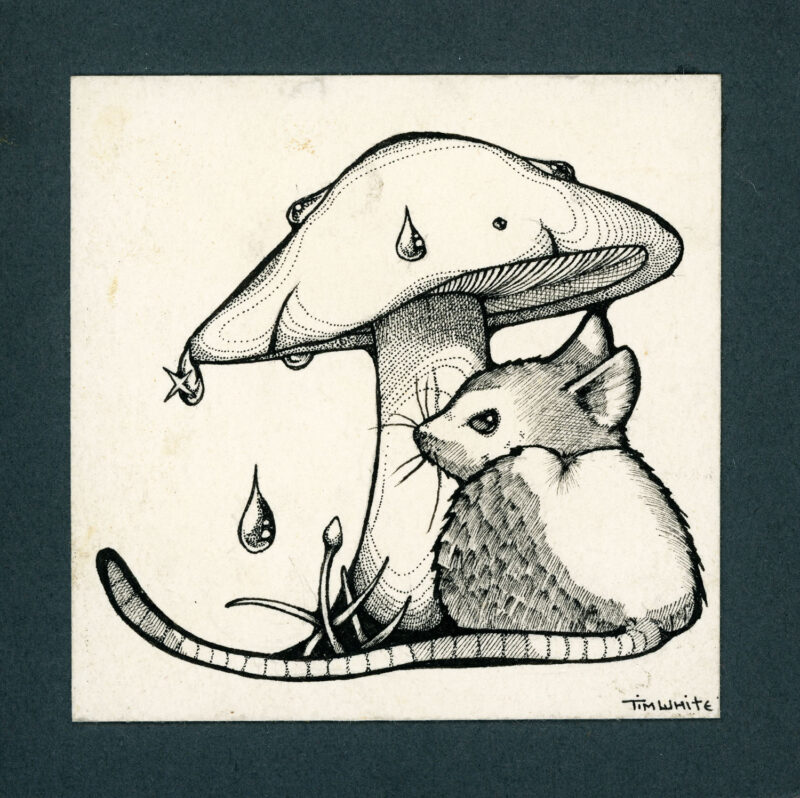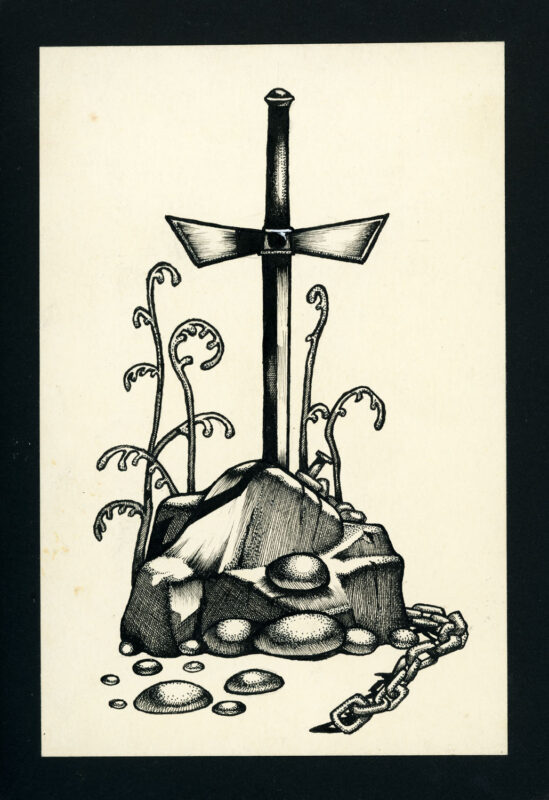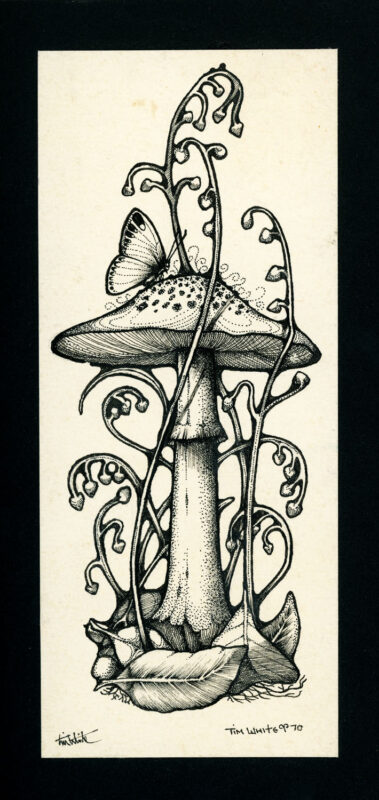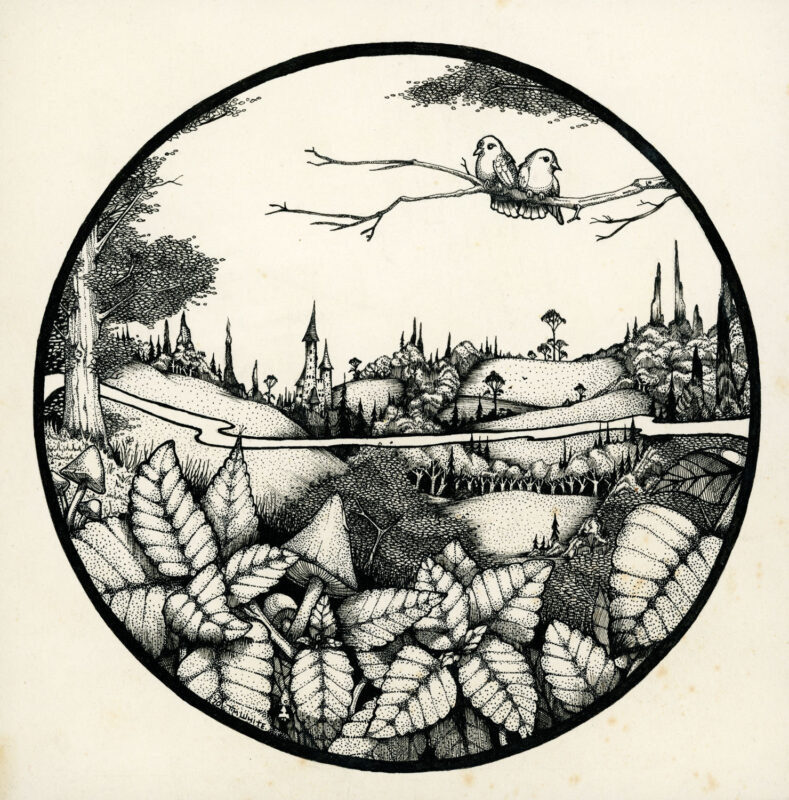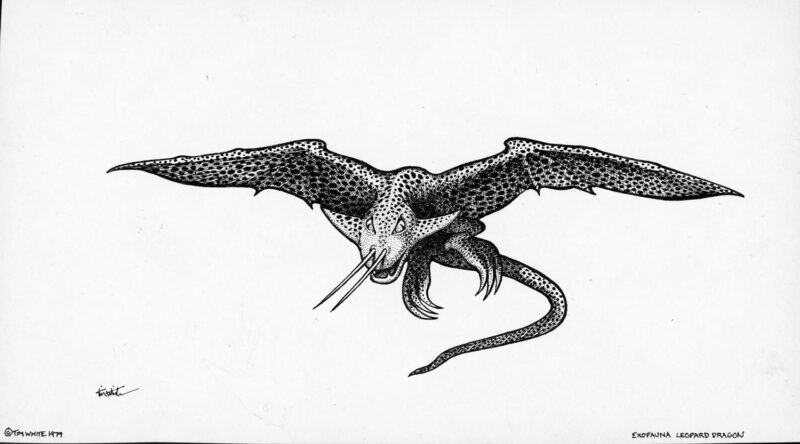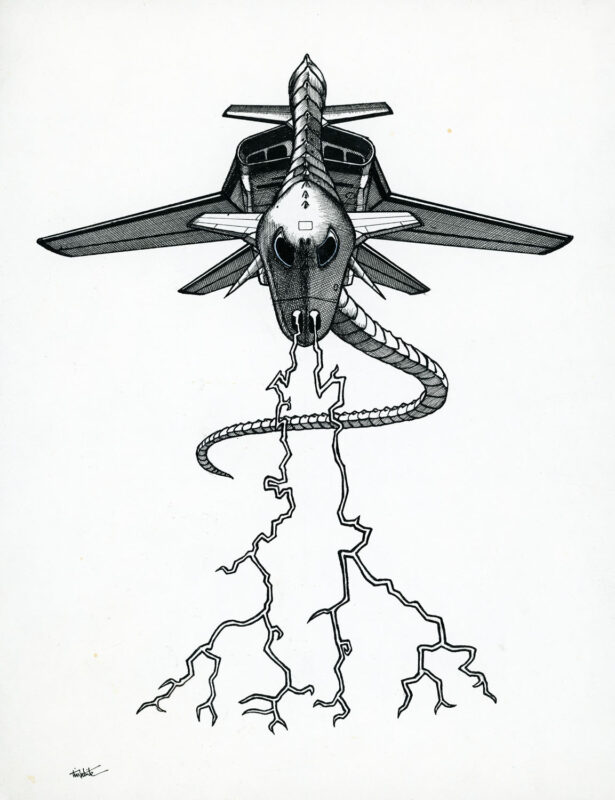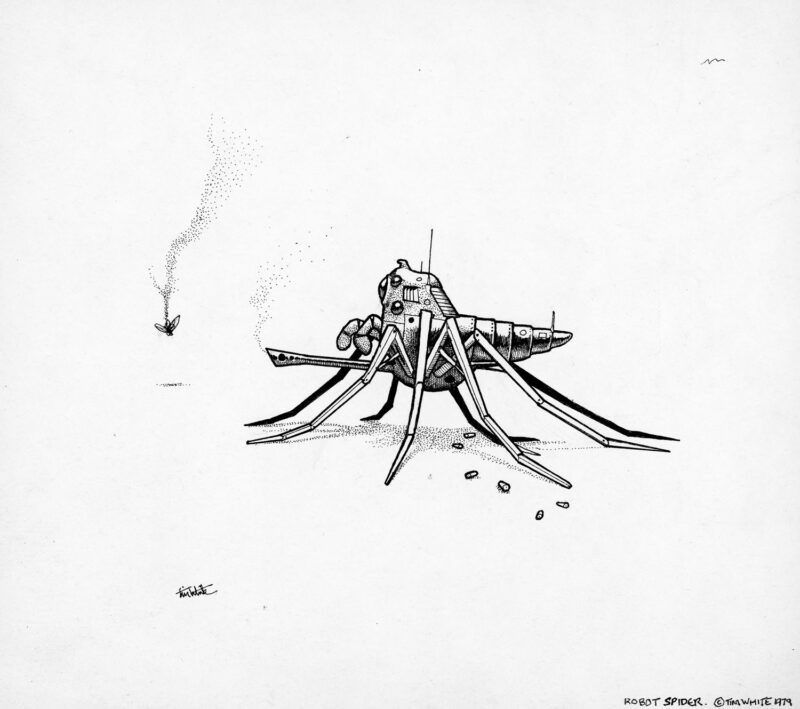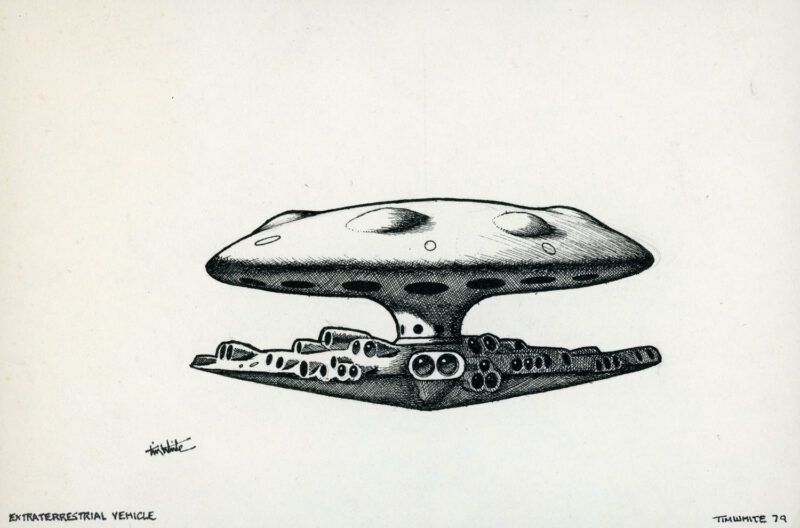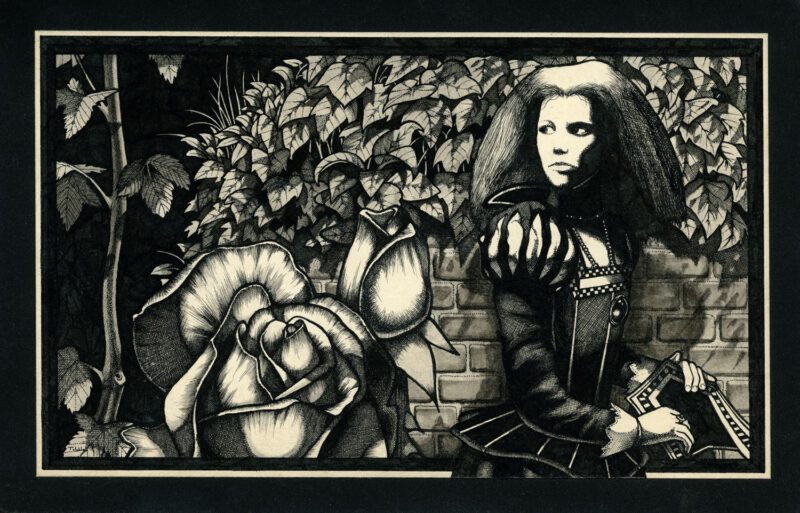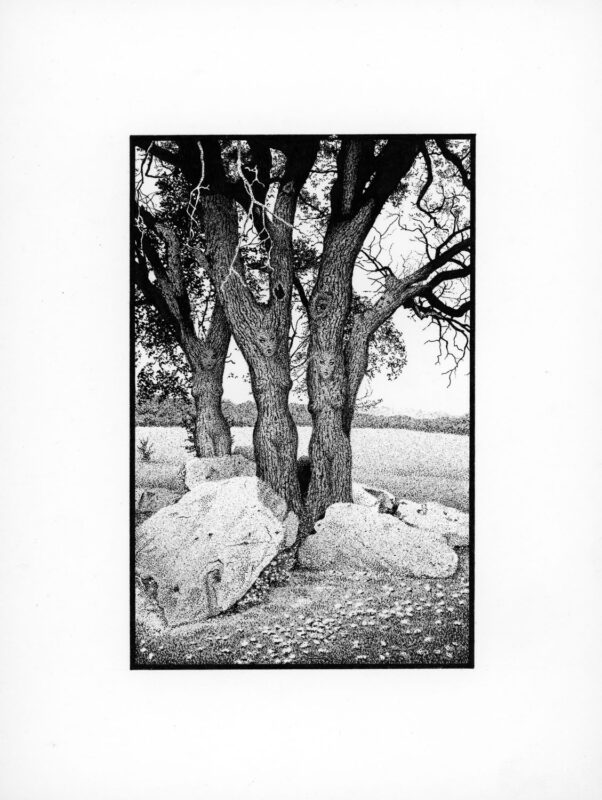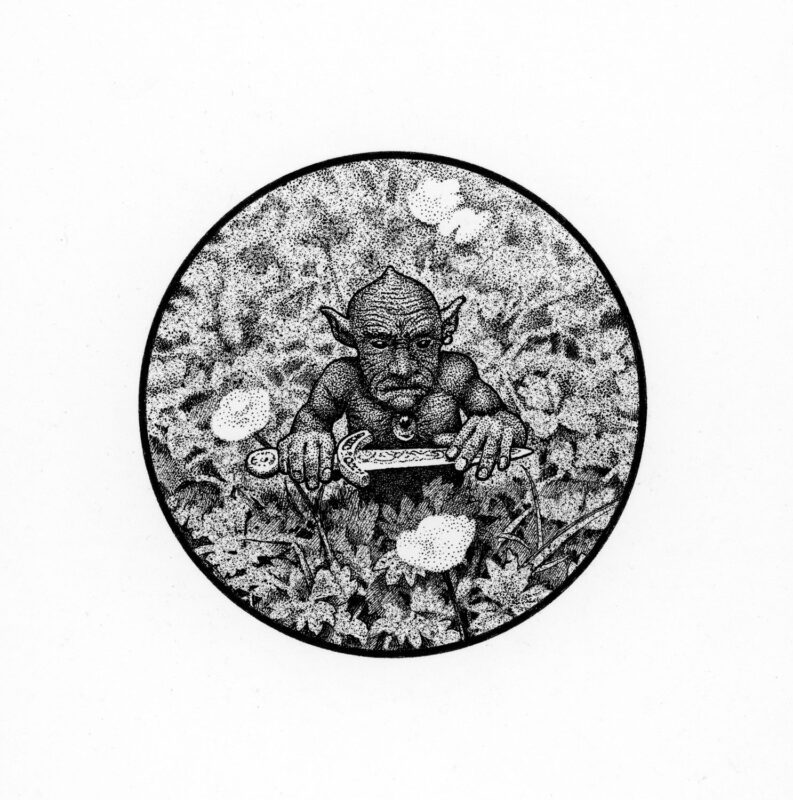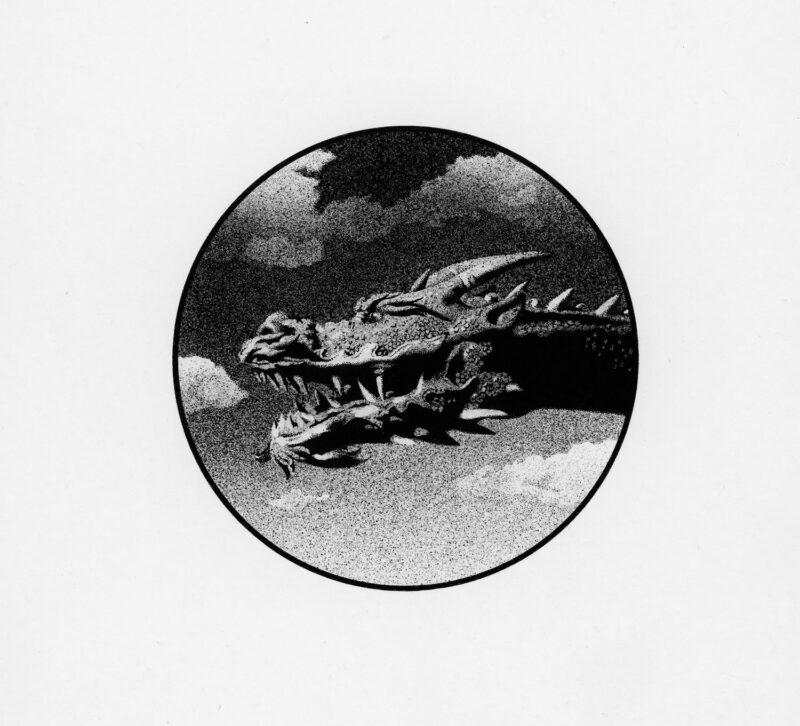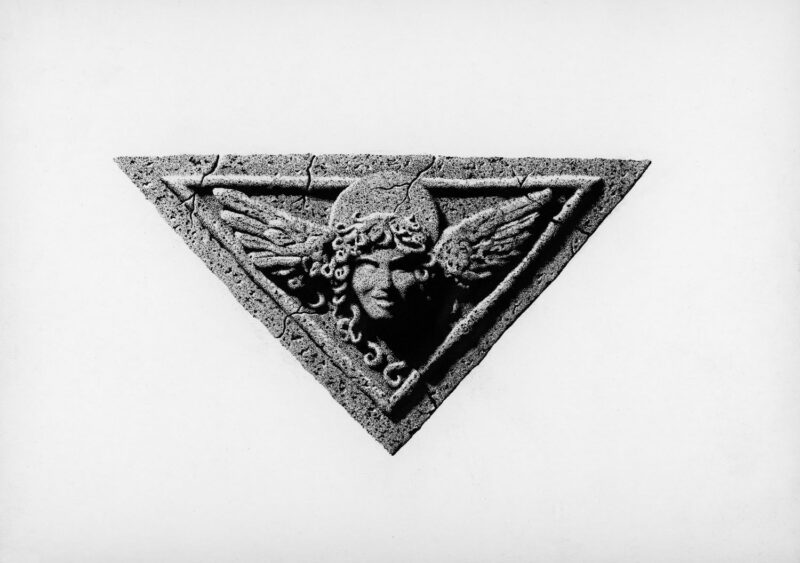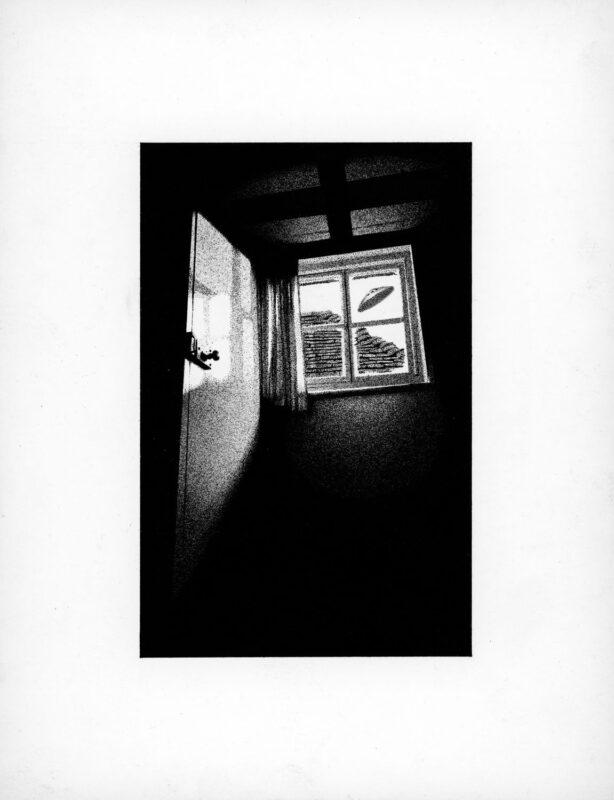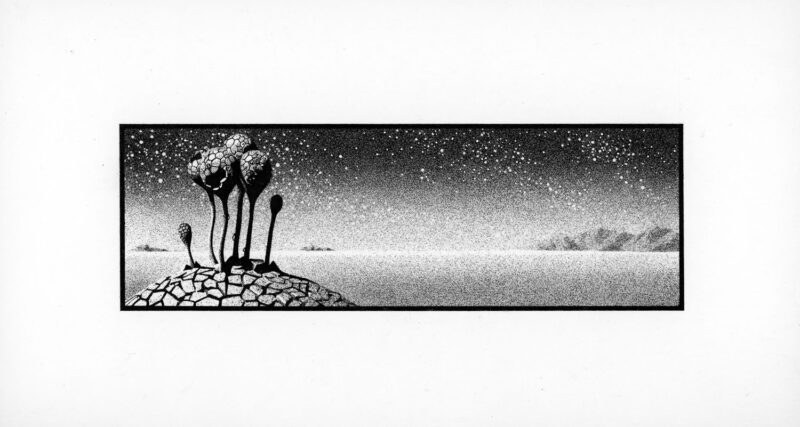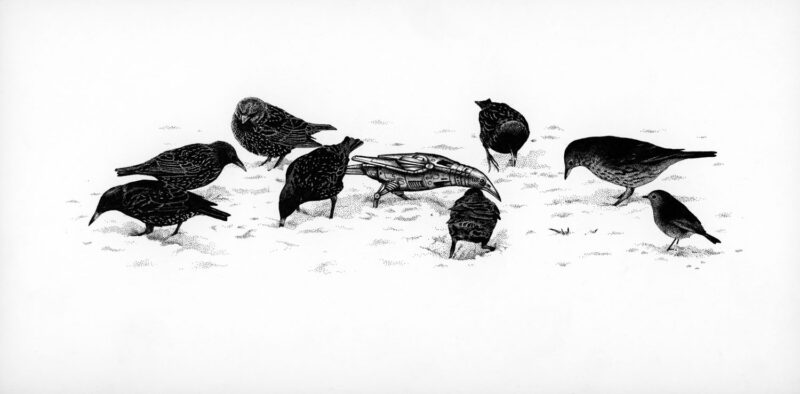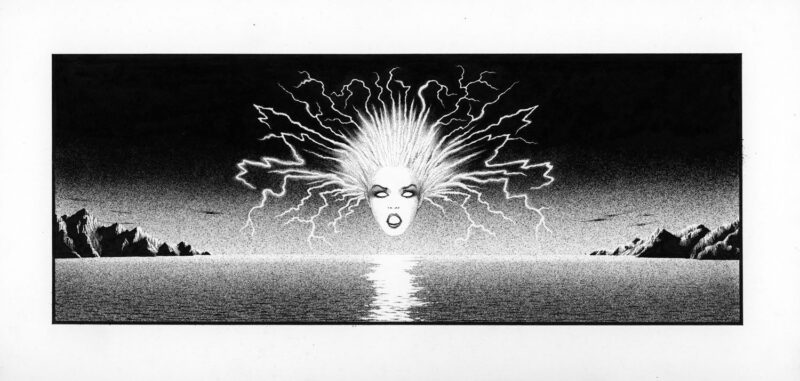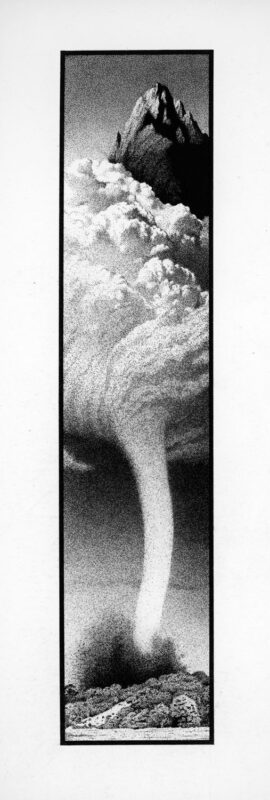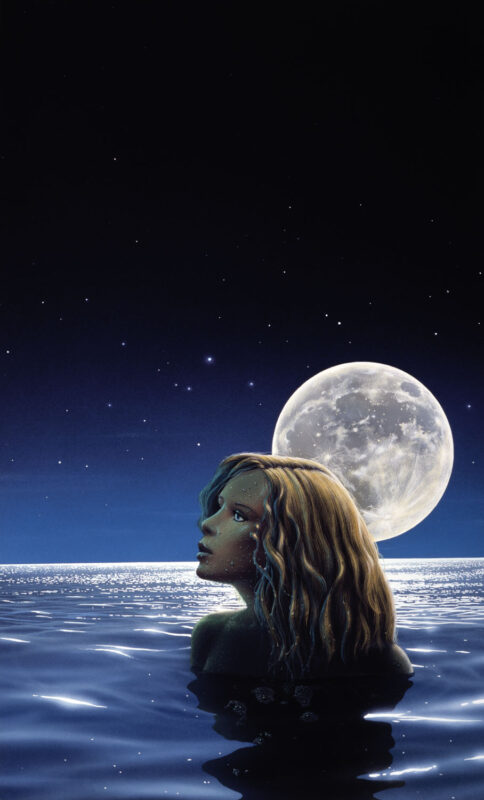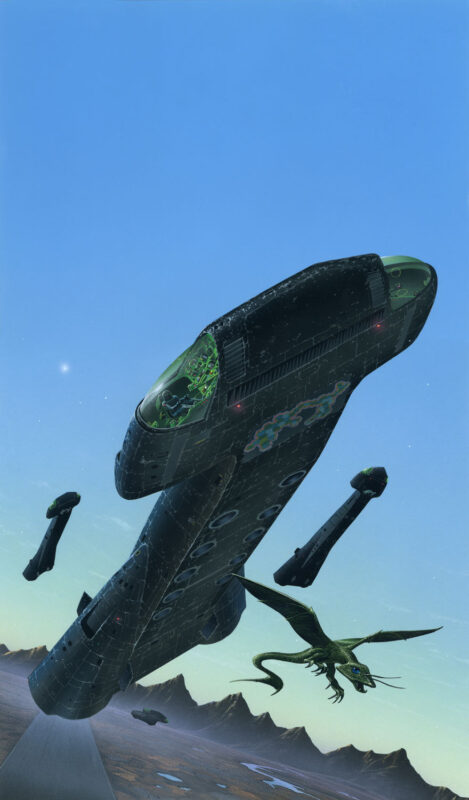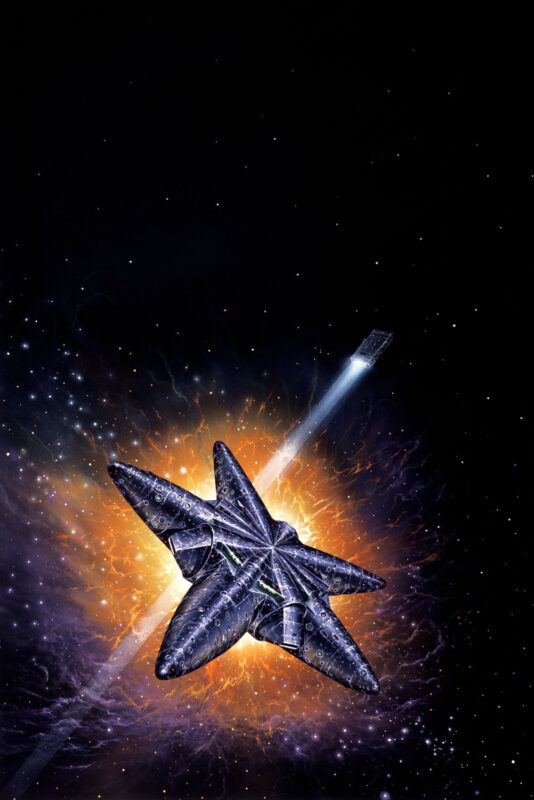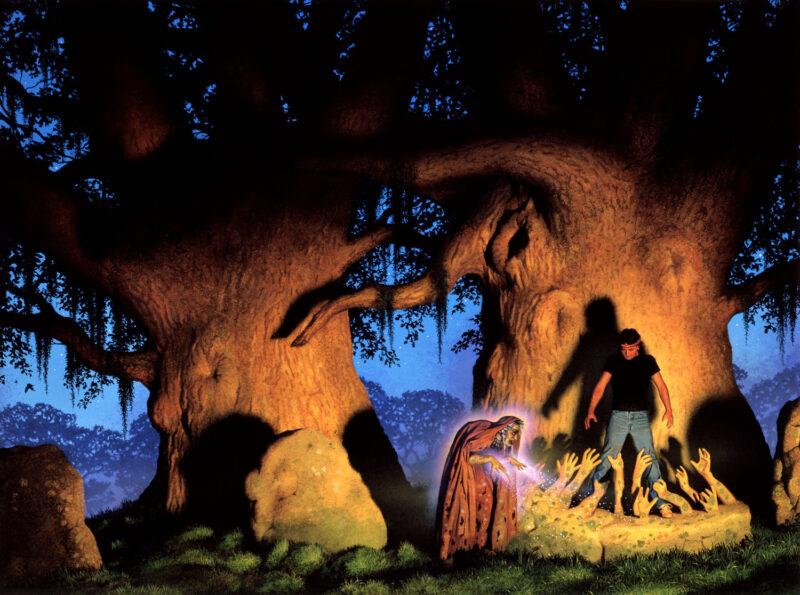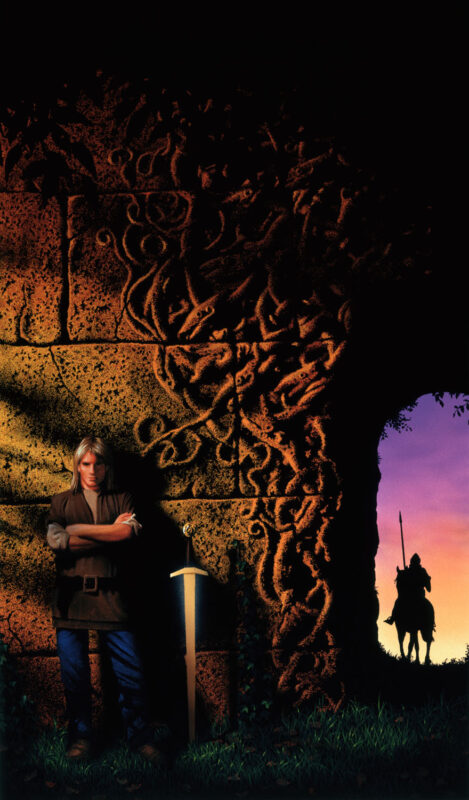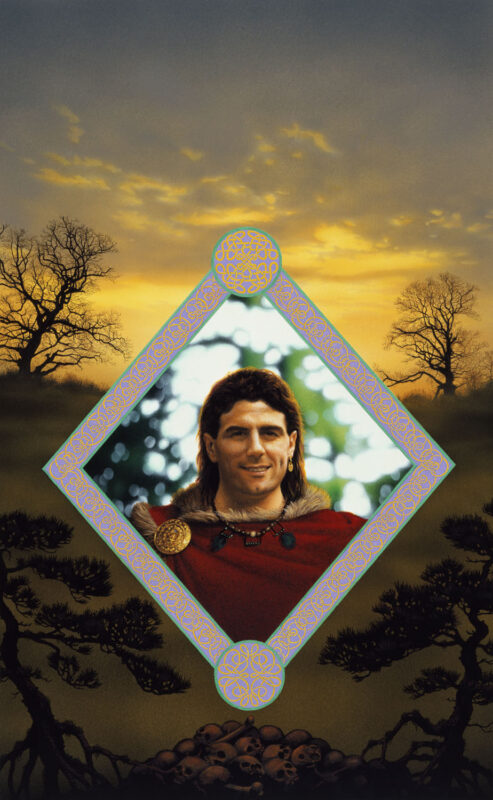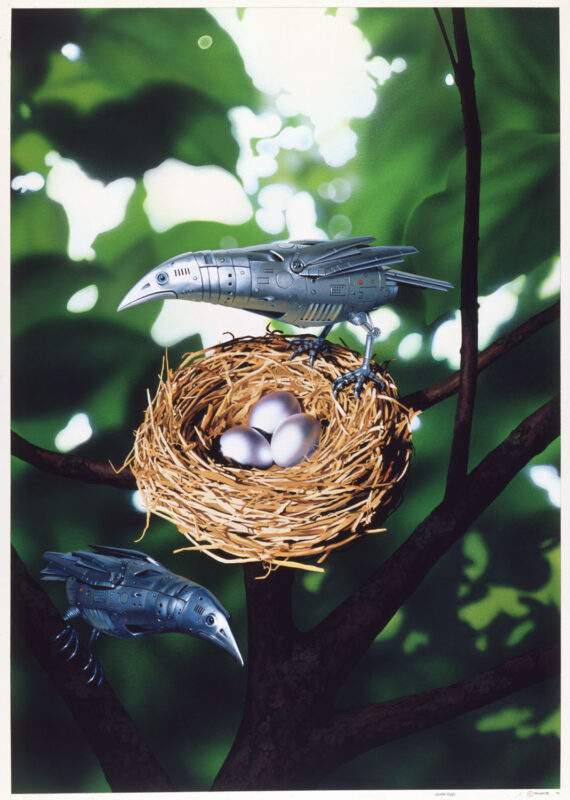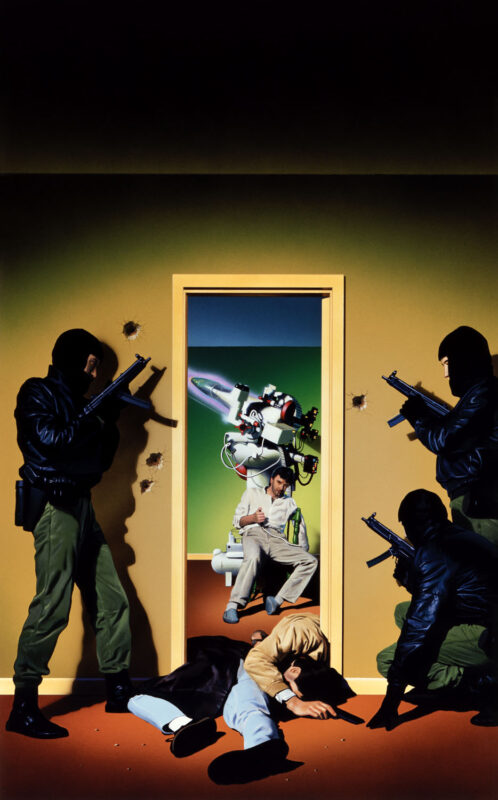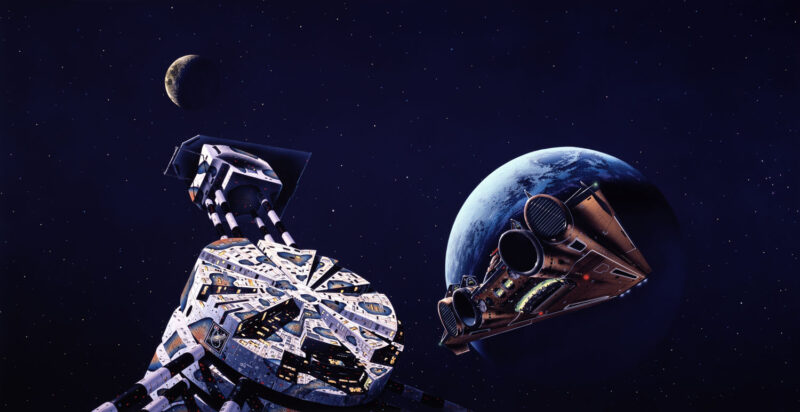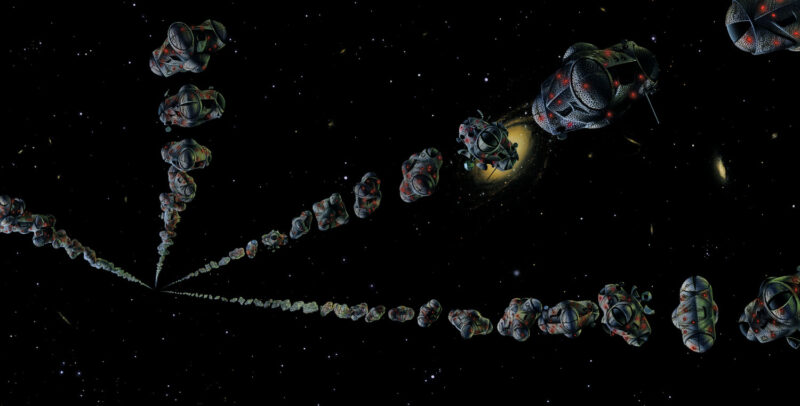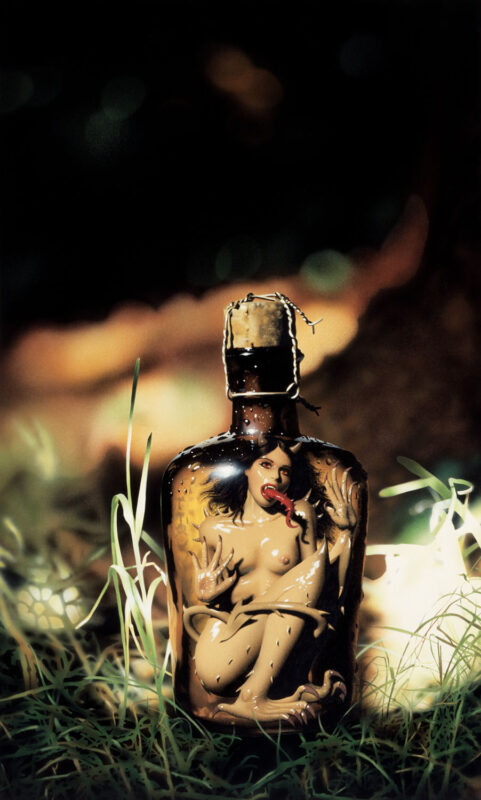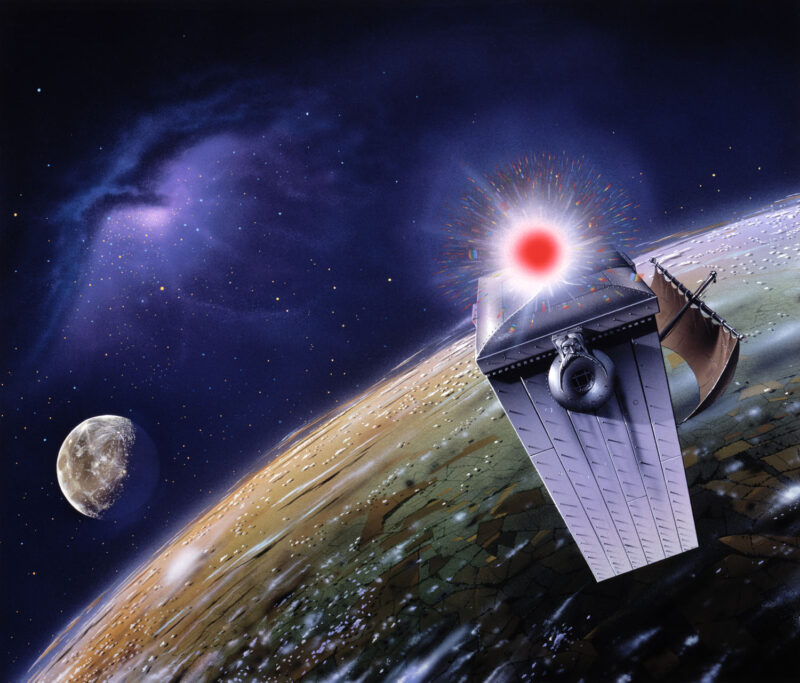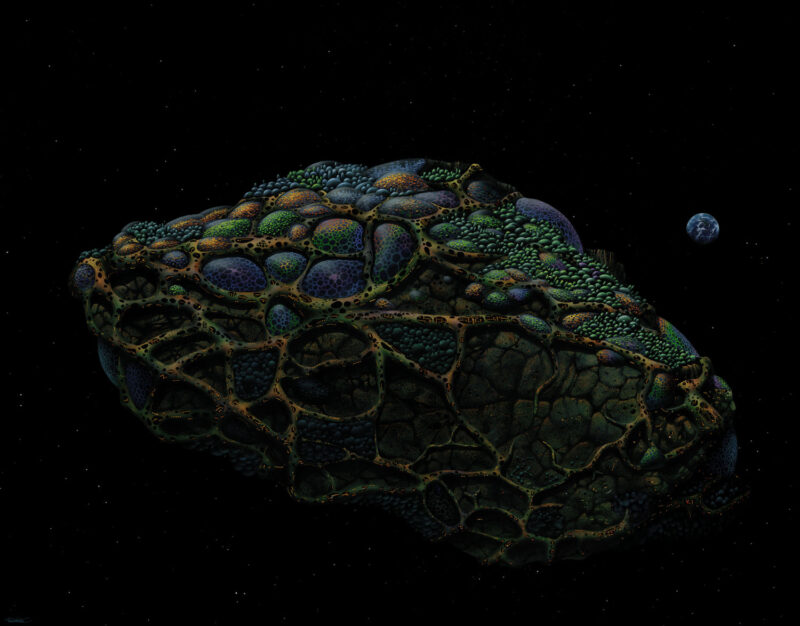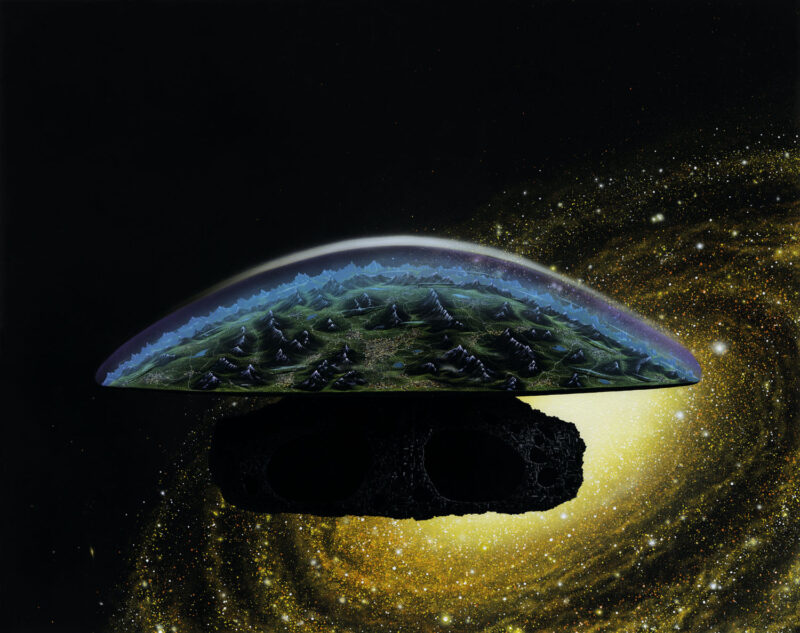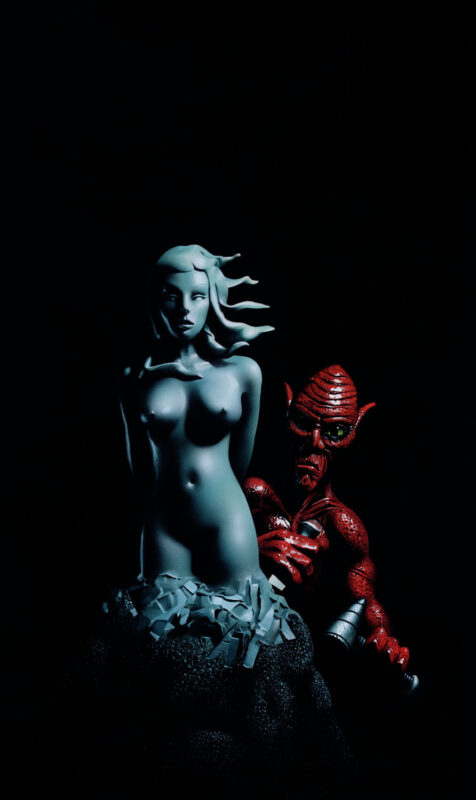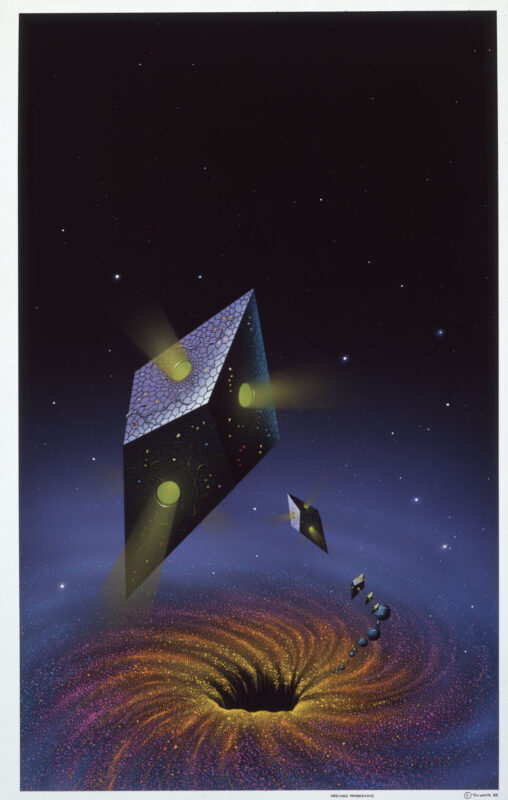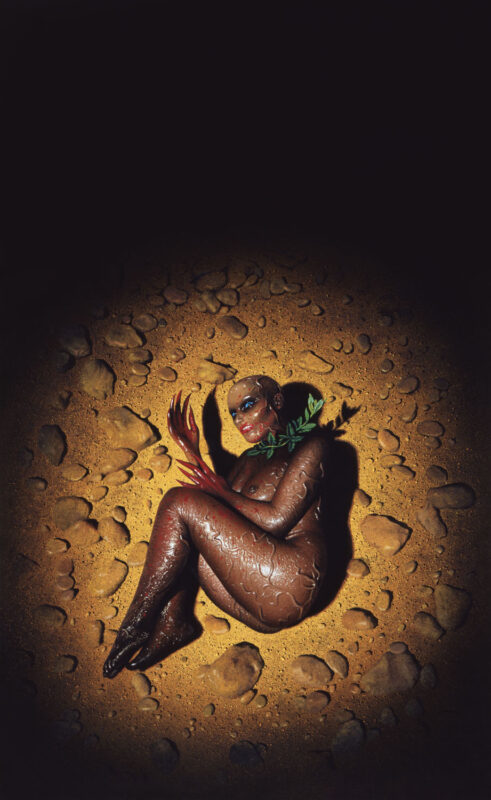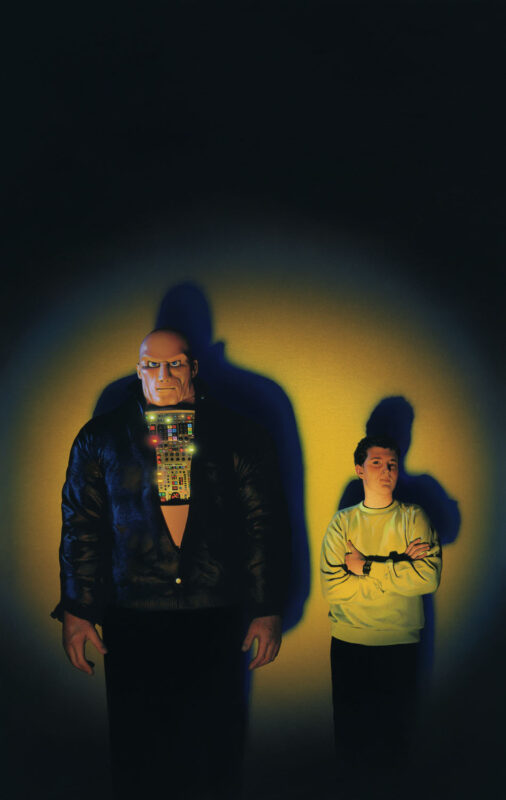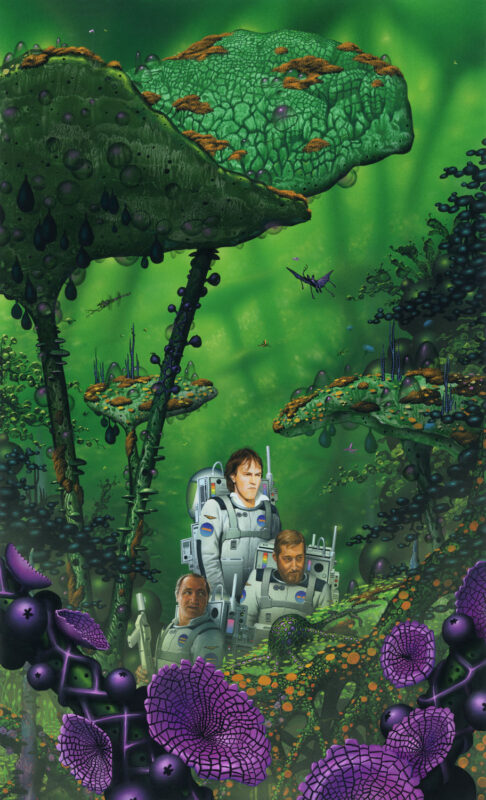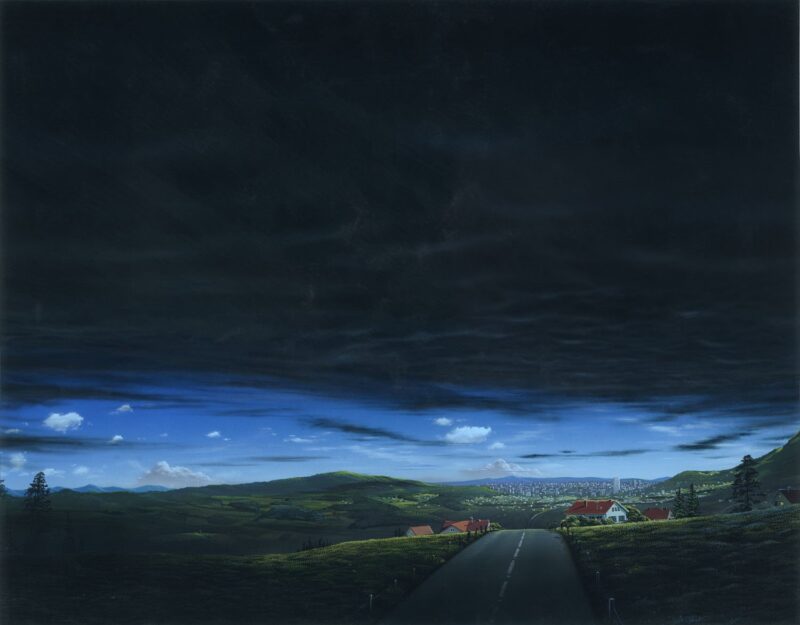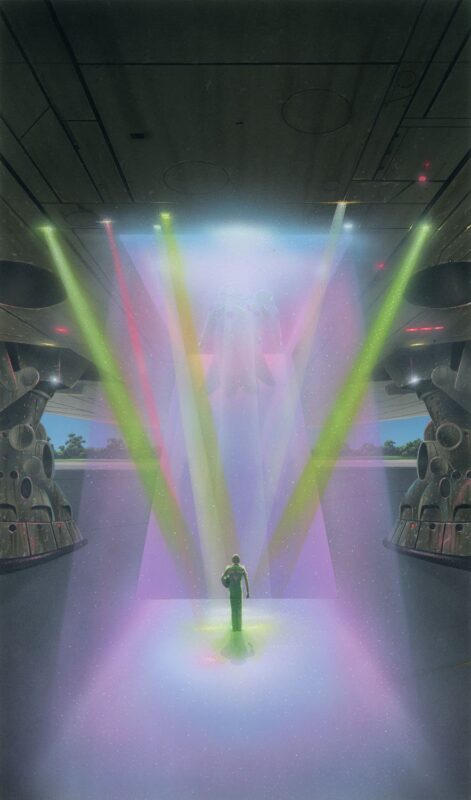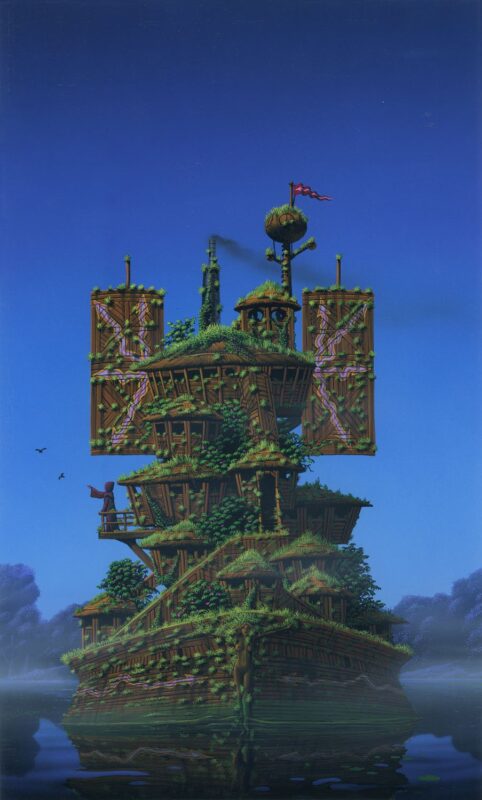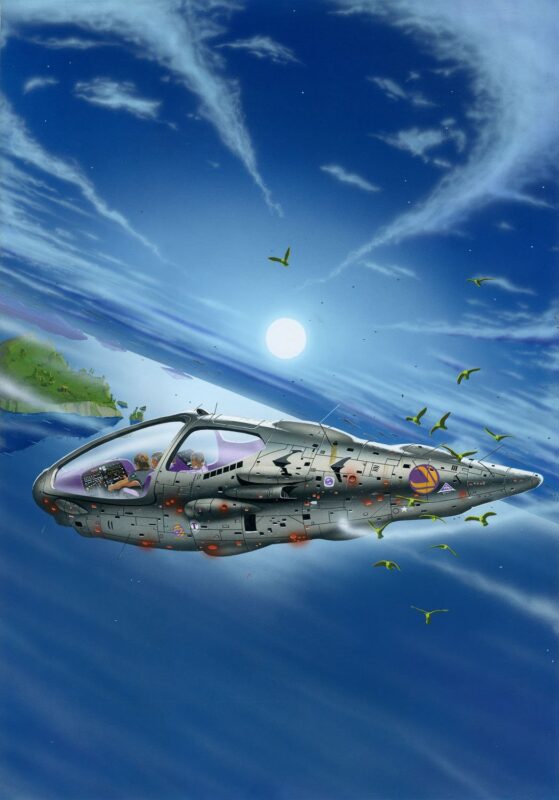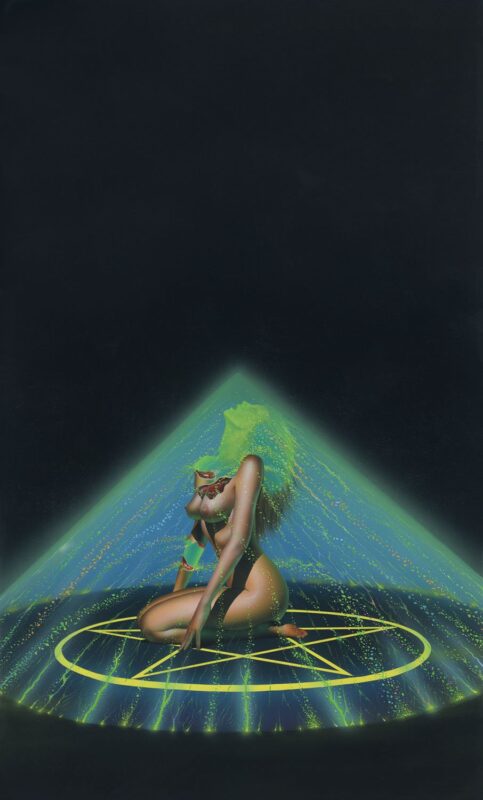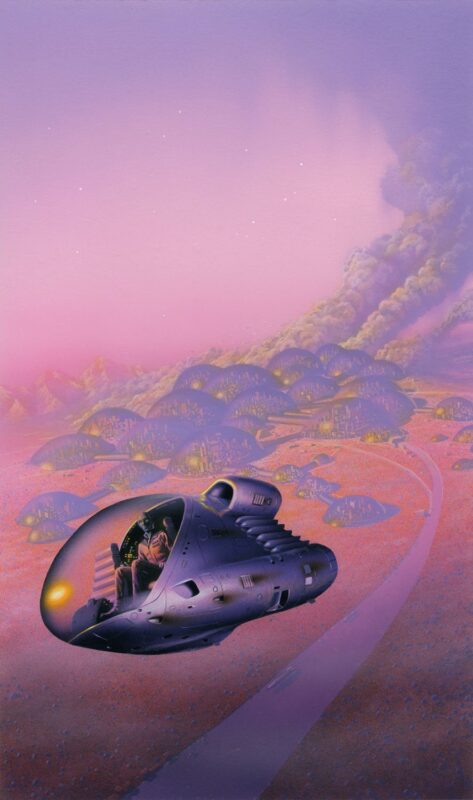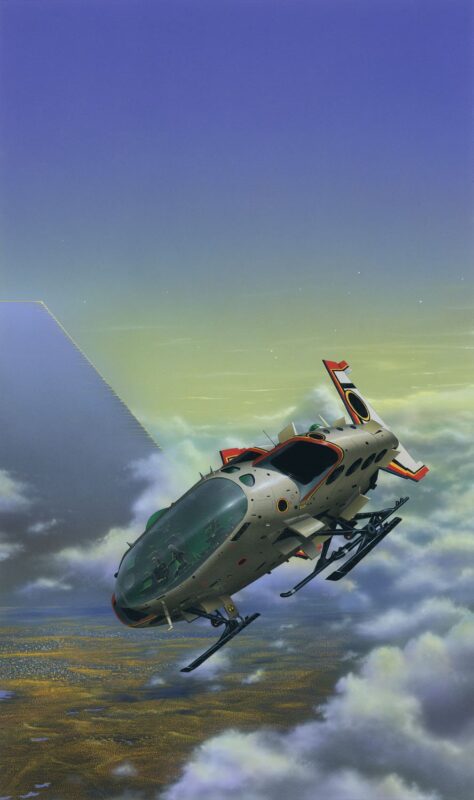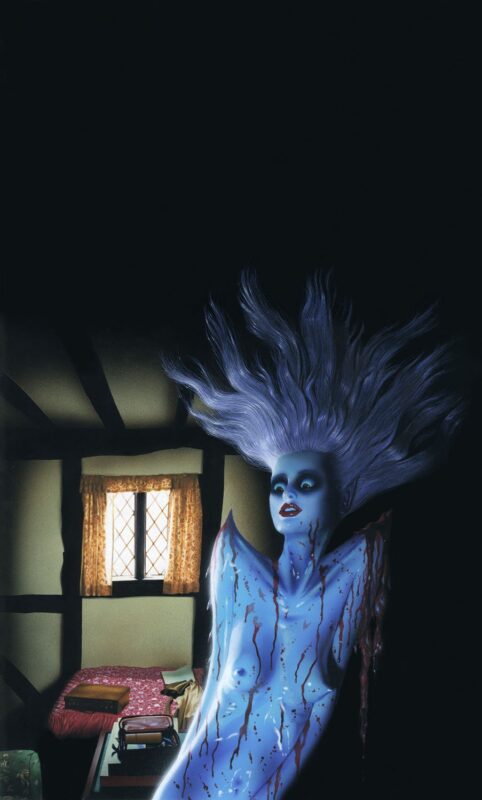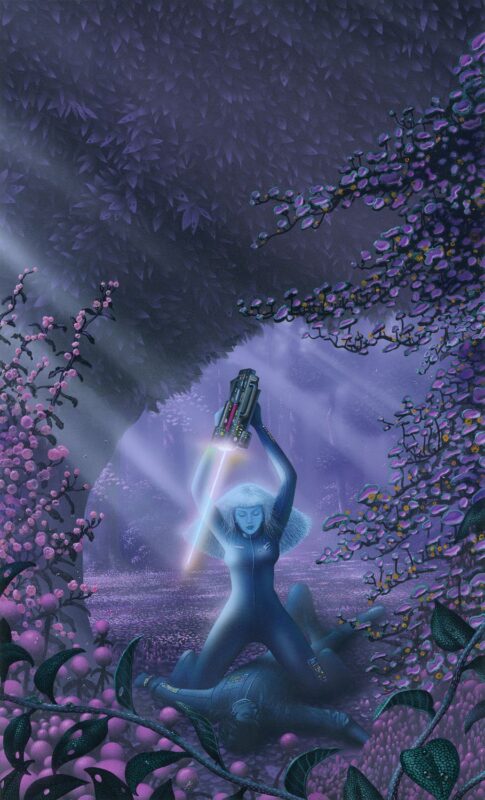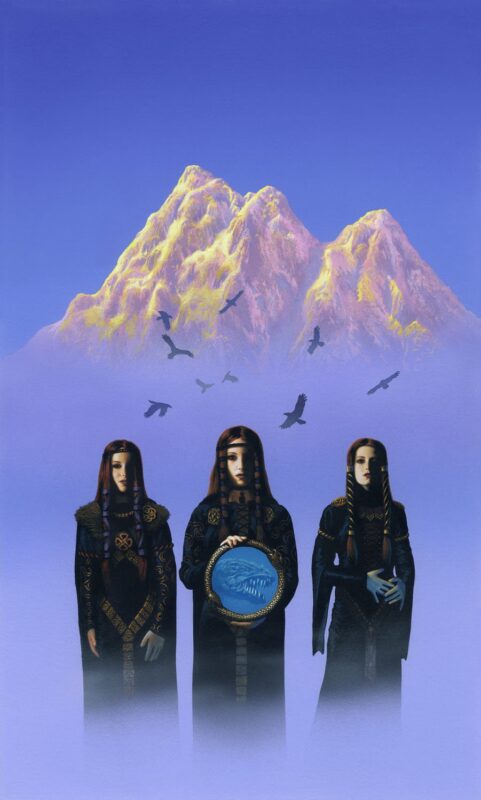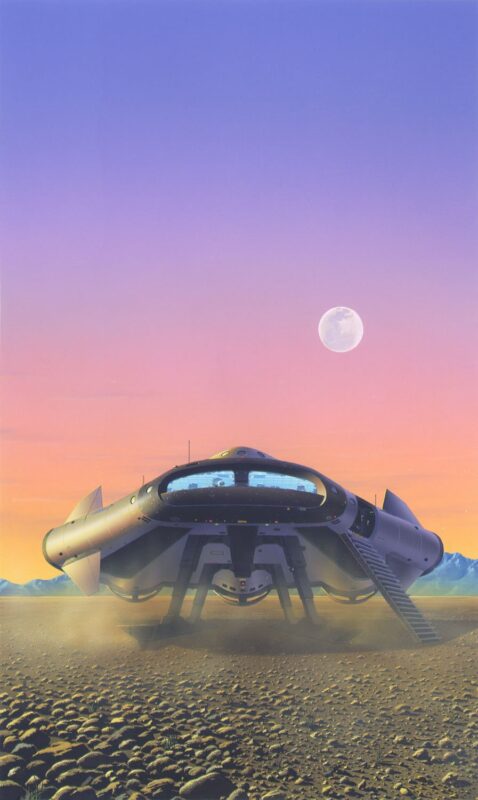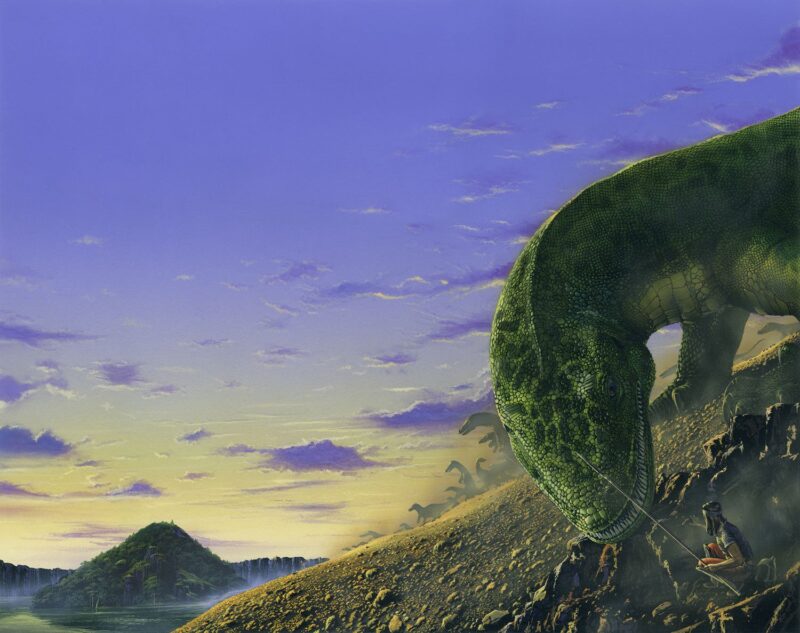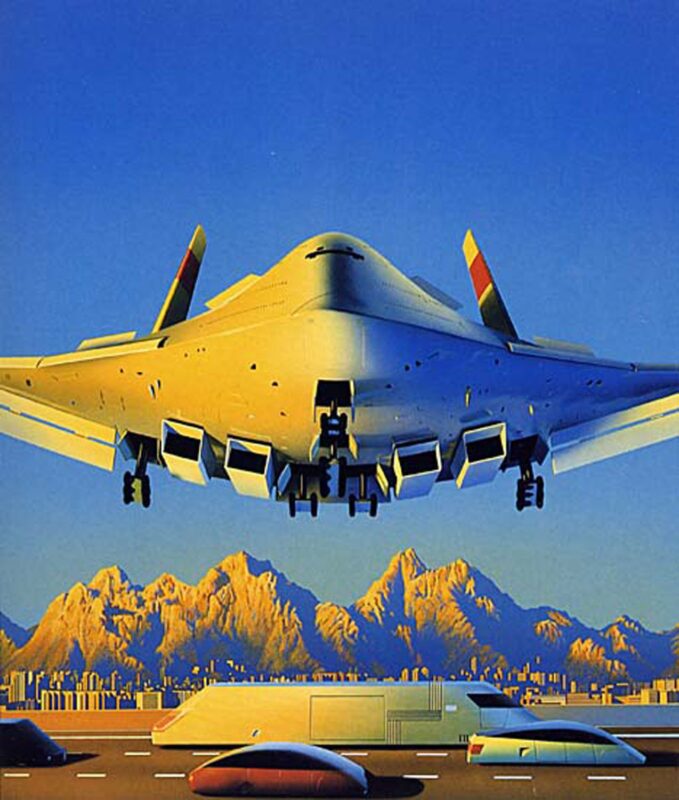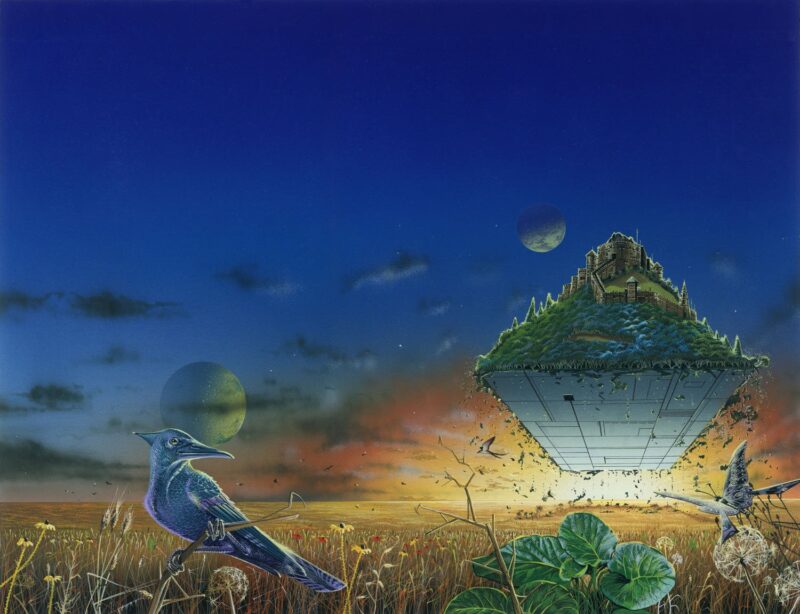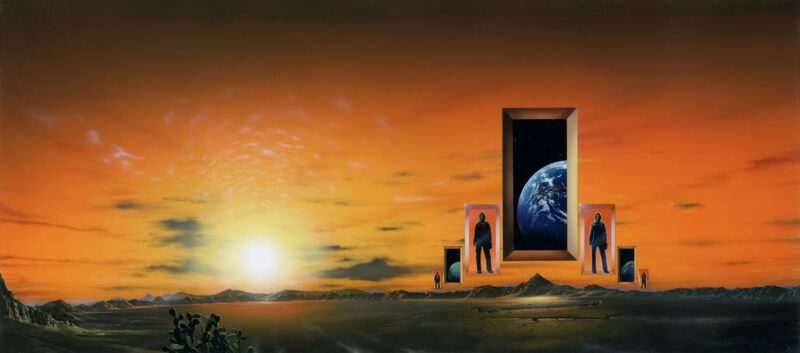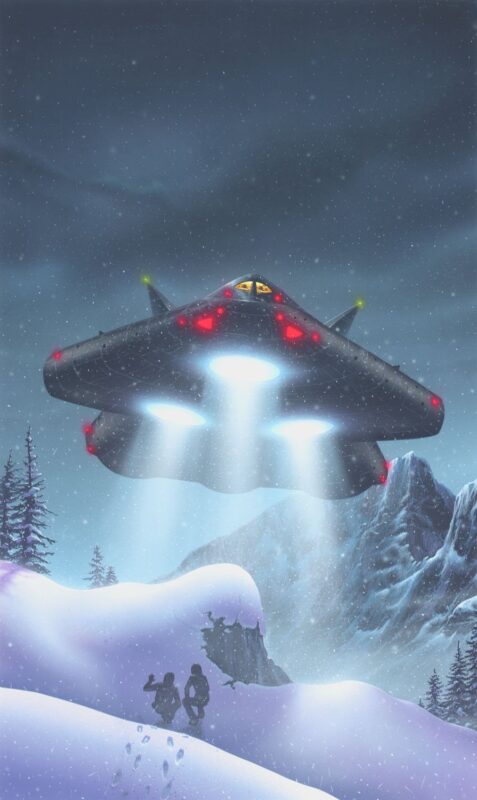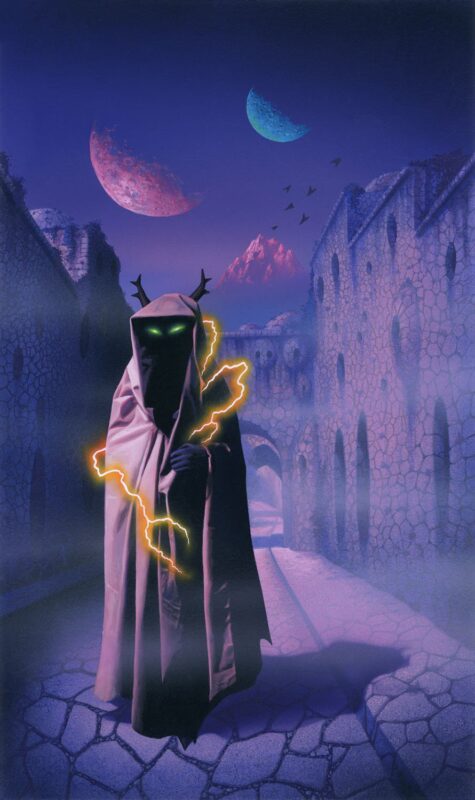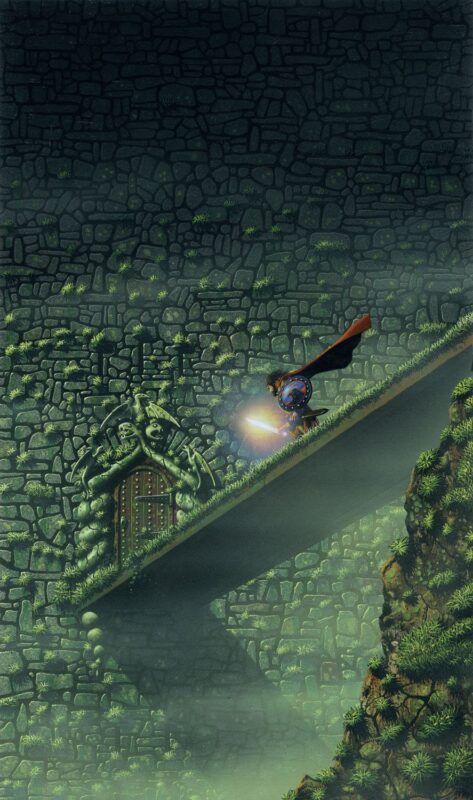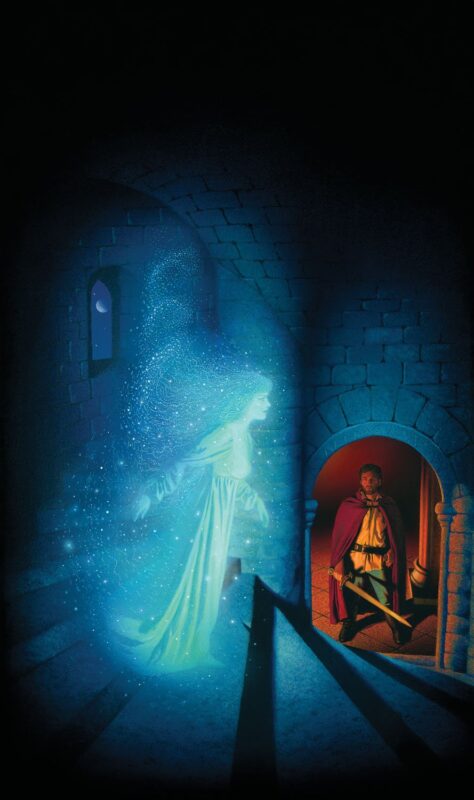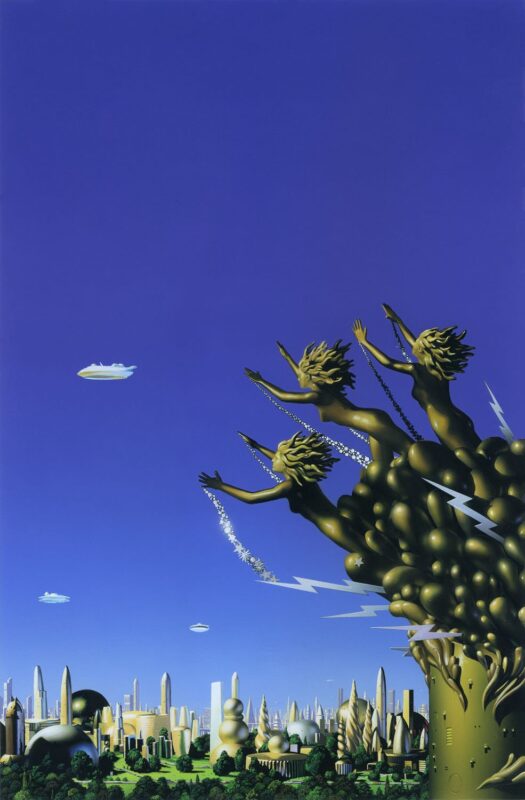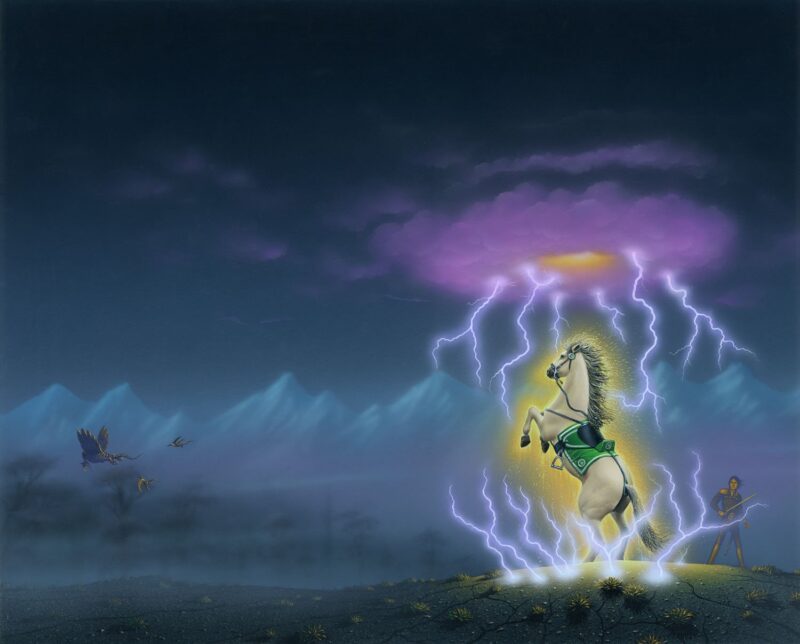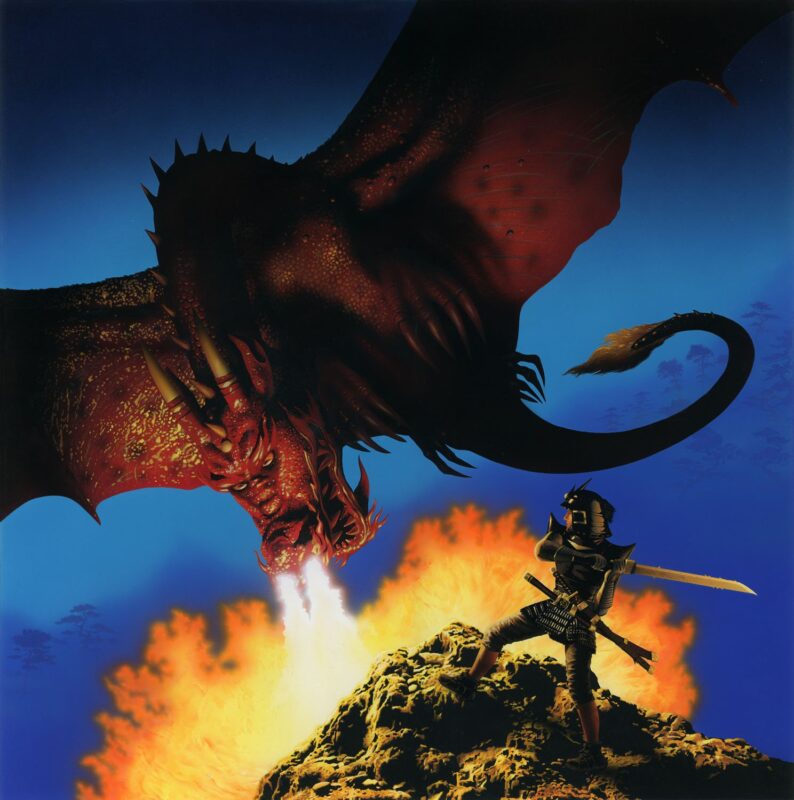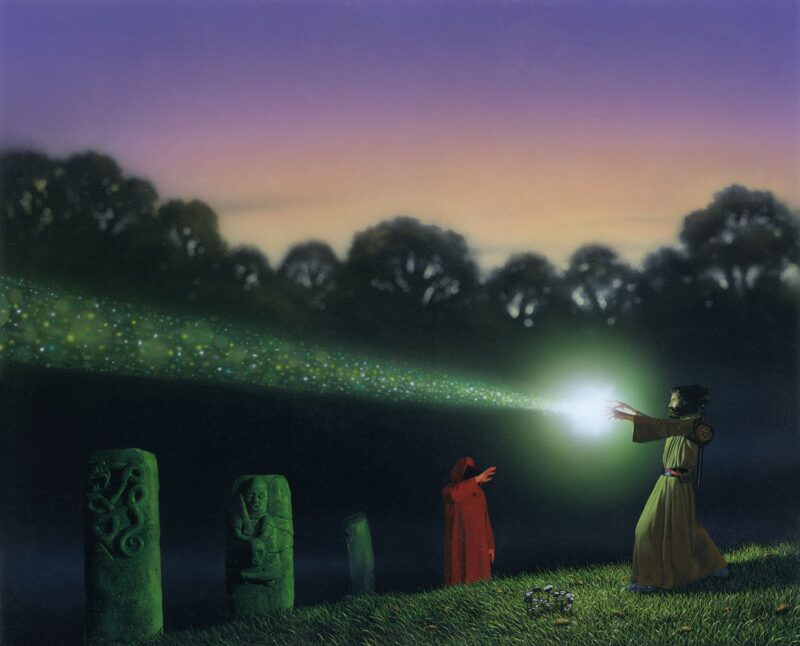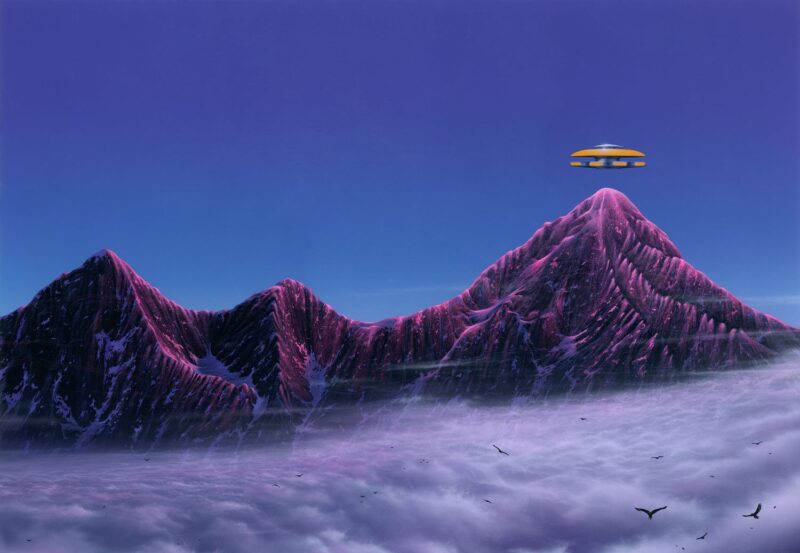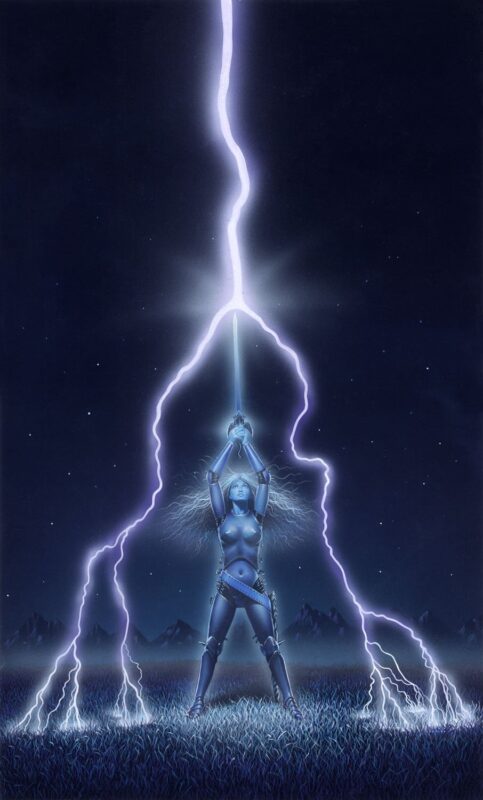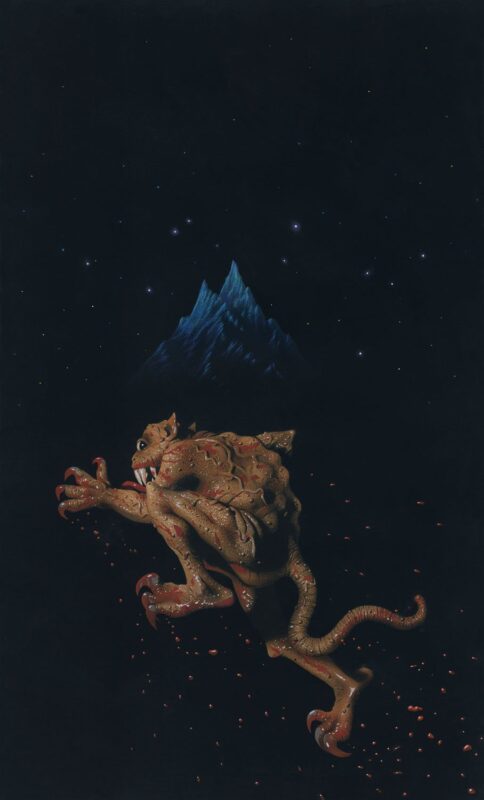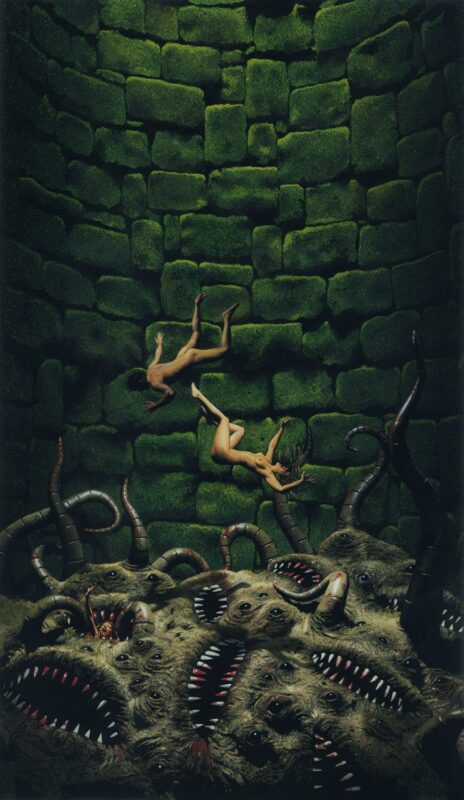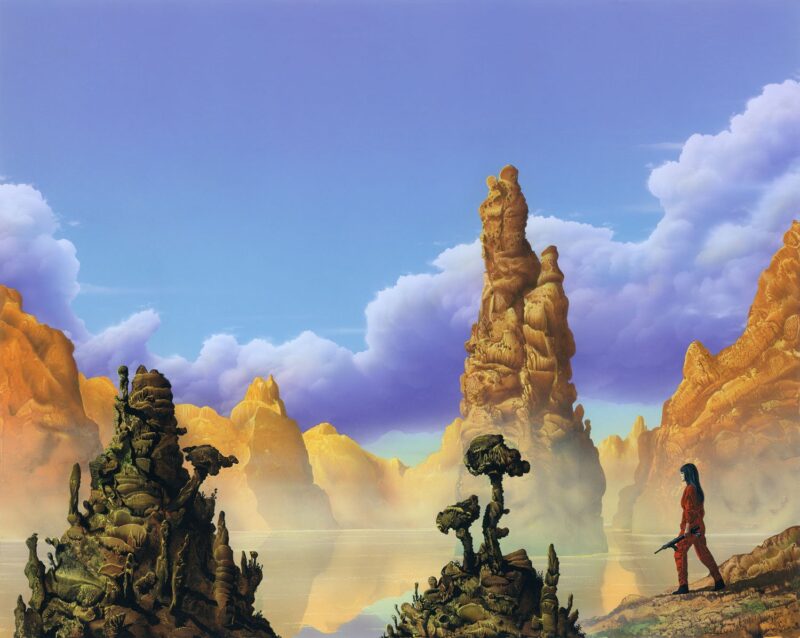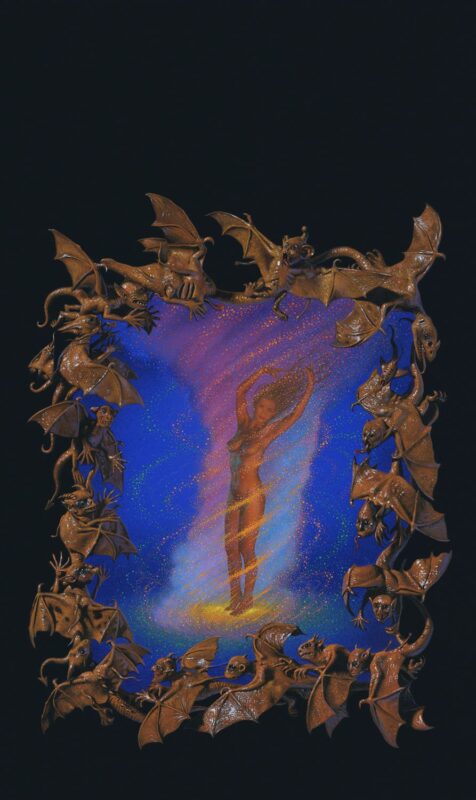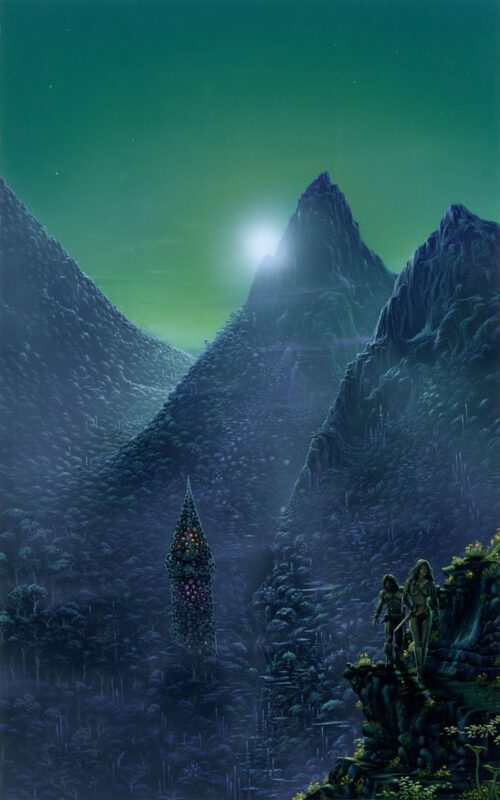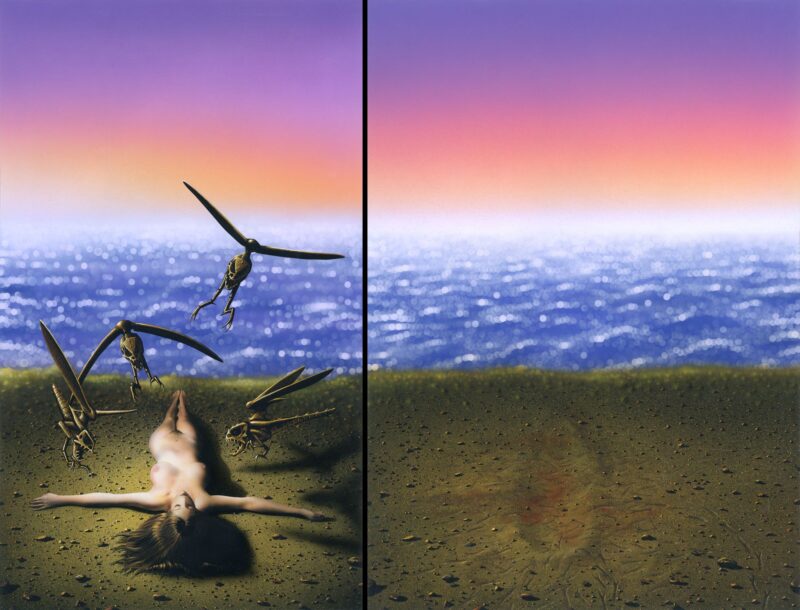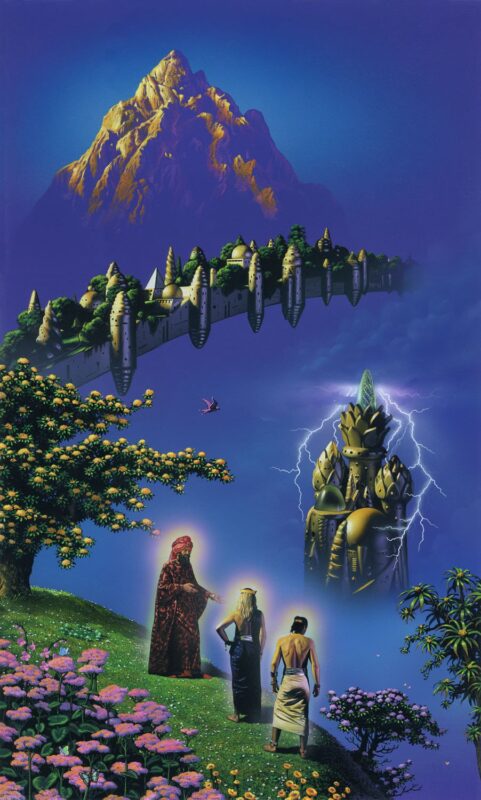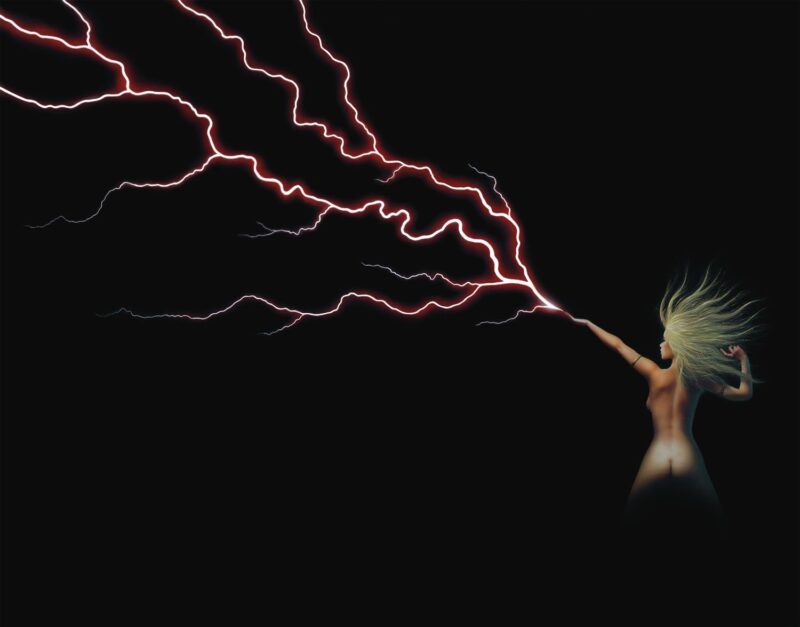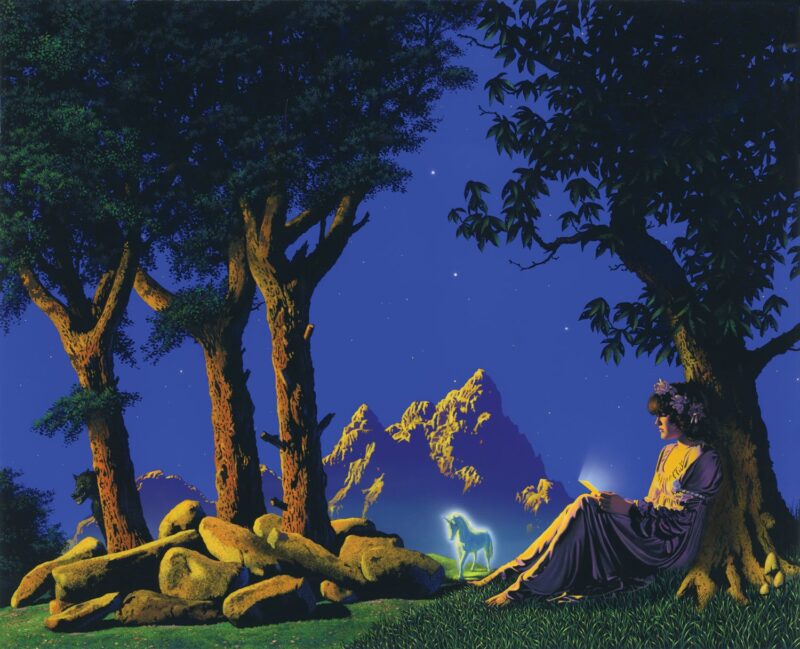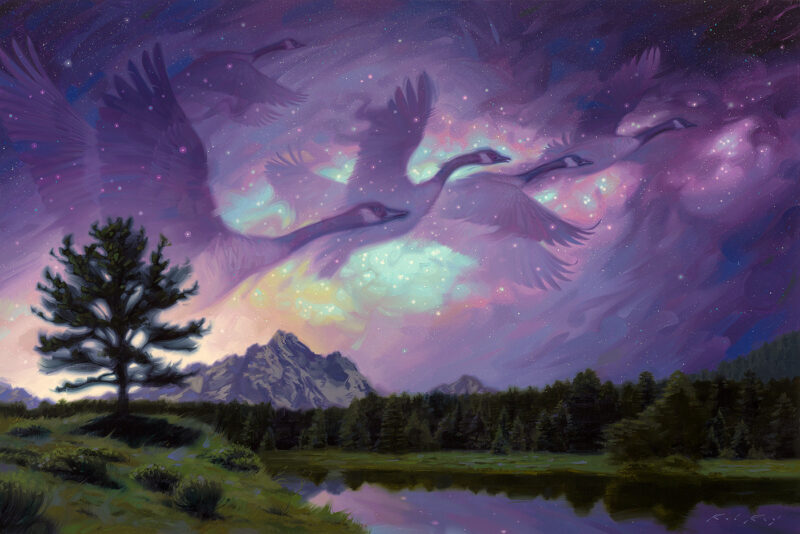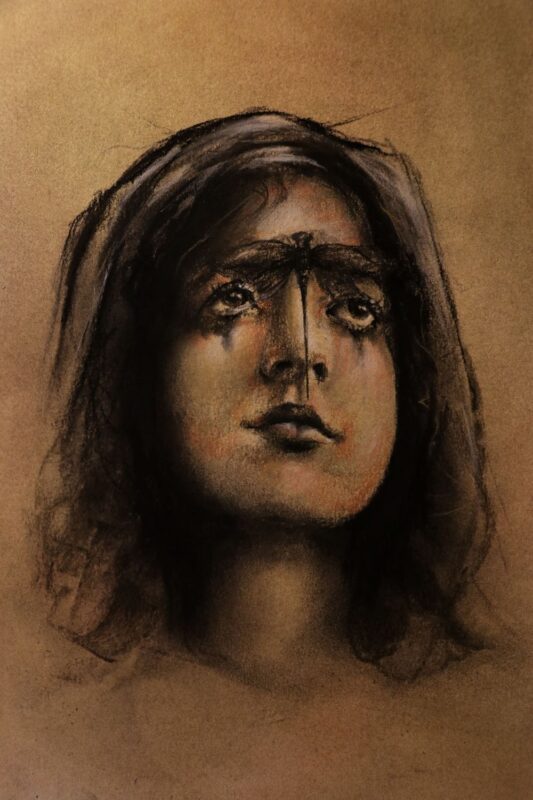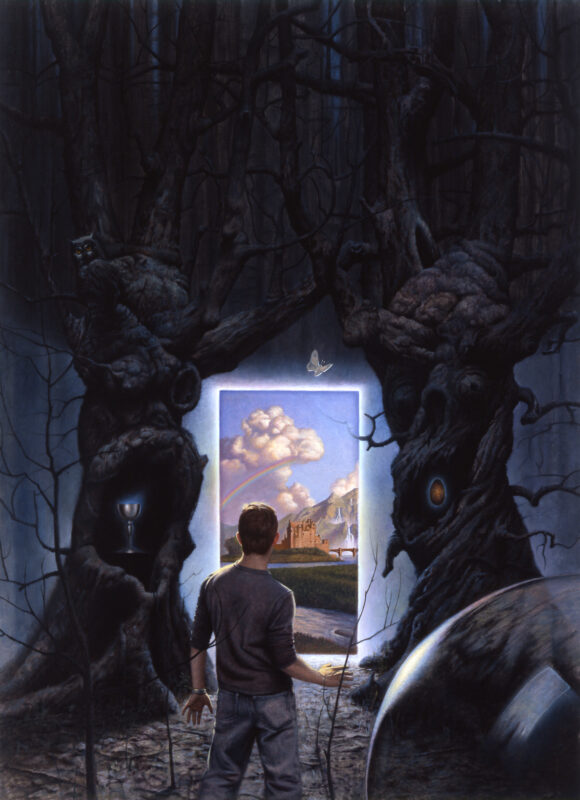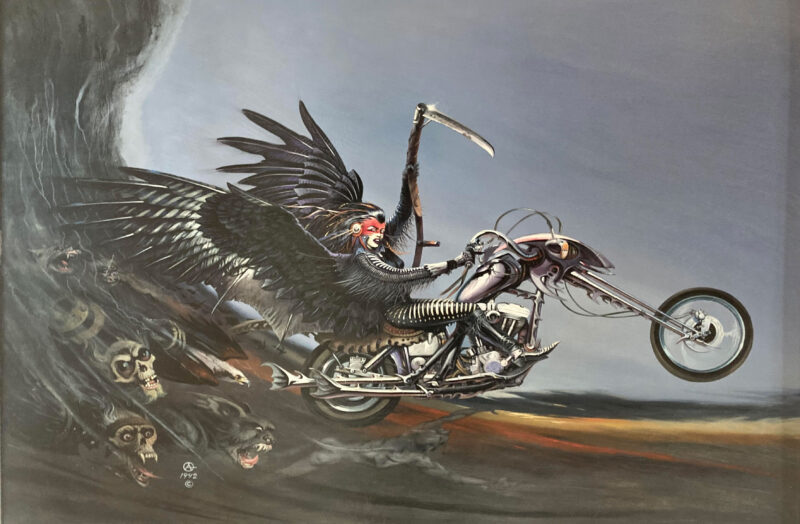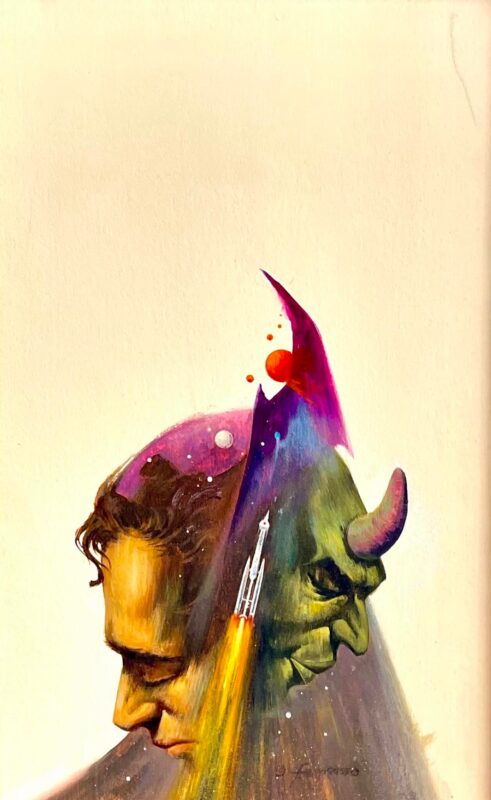
Tim White
(1952-2020) After artistic training at the Medway College of Design from 1968 to 1972, White worked in advertising for two years before receiving assignments to paint book covers for (principally) New English Library and Science Fiction Monthly; his first commission was for the 1974 Transworld/Corgi SF Collector's Library paperback of The Other Side of the Sky (coll 1958) by Arthur C Clarke. His early paintings were often dominated by large, meticulously detailed Spaceships, though he could also effectively depict other sorts of strange structures, such as the open building with multiple spires on the cover of a 1975 edition of A E van Vogt's The Darkness on Diamondia (1972) or the green cube with pyramids on each face hovering in space on the cover of a 1974 edition of E C Tubb's Galaxy of the Lost (1973 as by Gregory Kern). His covers featuring human figures were perhaps less successful, though he did display a flair for painting Monsters, like the Dinosaur-like creature on the cover of a 1976 edition of Robert A Heinlein's Glory Road (1962) or the metallic crab on the cover of a 1980 edition of Bruce Sterling's Involution Ocean (1977). Other distinctive monsters appeared on the covers of a 1981 edition of Frank Herbert's collection The Priests of Psi (coll 1980) and of a 1988 edition of August Derleth's anthology Tales of the Cthulhu Mythos (anth 1969). At times, he would place bizarre structures and animals within lush landscapes, as on the covers of a 1986 edition of Bob Shaw's One Million Tomorrows (1970) and a 1986 edition of Piers Anthony's Anthonology (1985), and his paintings could be further distinguished by their unusual perspectives.
White has been celebrated as a representative of a new school of super-realists that began shaping British sf art in the mid-1970s. Though Chris Foss and Jim Burns were equally influential, there is a case for calling him the finest technician in this tradition, as his use of very fine detail imbues his paintings with a luminous clarity sometimes reminiscent of René Magritte (1898-1967) or, rather differently, of Andrew Wyeth (1917-2009). Between 1981 and 1986, White was nominated six consecutive times for the British Science Fiction Association Award for Best Artist, receiving the honour in 1983. Although he continued working throughout the 1990s, the results generally seemed less inspired, and – owing reportedly to health problems – he became relatively inactive from the year 2000.
White published four compilations of his artwork, beginning with The Science Fiction and Fantasy World of Tim White (graph coll 1981); the other titles are listed below. Mouches (graph 1983) is a comic story about three flies, told without words.
